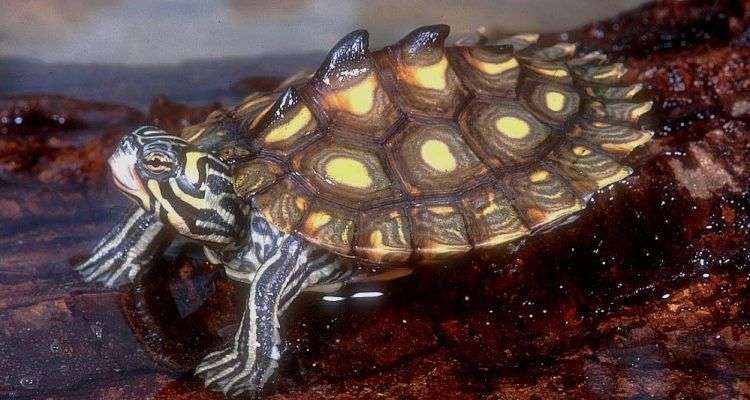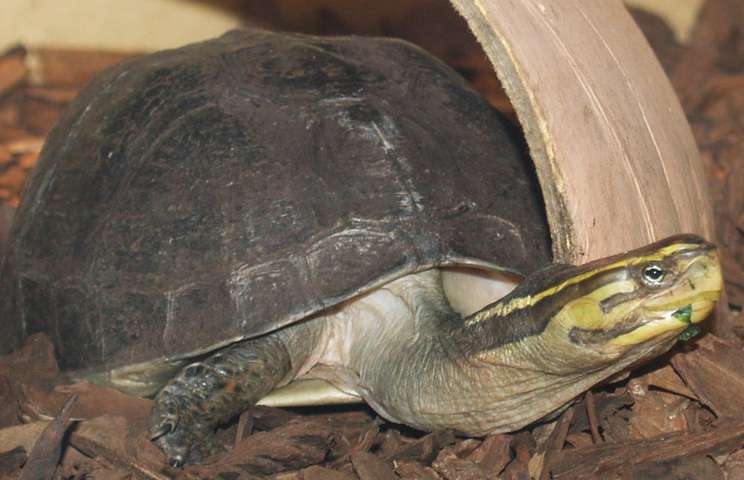
Rare Map turtles known as yellow-blotched Map turtles are native to the Pascagoula River in Mississippi. This species’ habitat is so unique that it is classified as Threatened. Yellow-blotched Map turtles are distinguished from other species of Map turtles by having the tallest central keel. These omnivorous turtles primarily consume fish, insects, crustaceans, and sporadic plants.
Habitat
Yellow-blotched Map turtles have a particularly specific habitat due to the extremely constrained geographic area in which they live. They favour areas where the river bottom is sandy, rocky, or formed of clay because they enjoy the Pascagoula’s swift stream. The Pascagoula river in Mississippi is the only river basin in North America where yellow-blotched Map turtles can be found, making them an extremely rare and endangered species.
Care as a Pet

Housing
ow-blotched Map turtles require an aquatic environment, much like other types of map turtles do. Their tank should have a capacity of 50 gallons. For every additional specimen you plan to retain, you should add 20 to 50 gallons of room. Women will need more space overall. You can keep yellow-blotched Map turtles in outdoor ponds as well. Bring your turtle inside if your pond freezes easily in winter weather or if the outside temperature frequently falls below what is best for it.
Heat
The ideal water temperature for yellow-blotched Map turtles is between 70 and 75 degrees Fahrenheit. To monitor the temperature, use an aquarium thermometer. You will require an underwater heater if you reside in a region where temperatures frequently fall below this range. The basking area should be kept between 86 and 90 degrees Fahrenheit in temperature. Make sure this temperature is appropriate because your Yellow-blotched Map turtle will like to bask frequently.
Feed
Since crickets and worms are mostly insectivores, they can be beneficial food sources for Yellow-blotched Map turtles. Pellets and commercial turtle diets are also widely used. Additionally, you can periodically give your Yellow-blotched Map turtle strips of fish or other crustaceans, like shrimp. Additionally, you can give them some edible plant stuff. An excellent choice for plants would be pondweed or water lilies. Alternatively, you might try giving them kale, mustard greens, or dandelion leaves as a vegetable. Young turtles and adults feeding should be done once every two days, giving yellow-blotched Map turtles as much food as they can consume. As much as the hatchlings can consume, feed them every other day. A multivitamin and calcium supplement should be included in several of your weekly meals.
Table





